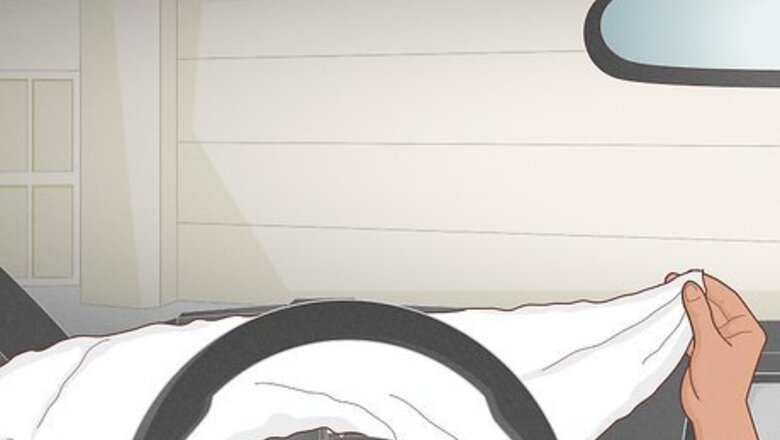
views
- Start by cleaning loose dust and dirt off the windshield with a dry microfiber towel to prevent streaks.
- Wipe your windshield with a water, rubbing alcohol, and vinegar solution. Scrub stubborn haze with a Magic Eraser and ammonia-free glass cleaner.
- Finish by wiping the inside of your windshield with glass cleaner and a microfiber towel. Dry the glass off with a clean towel.
Cleaning Film and Streaks off Your Windshield
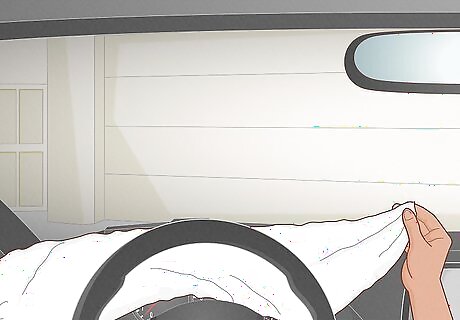
Lay towels over your dashboard. Sit in the passenger seat so the steering wheel doesn’t get in your way while you’re cleaning. Spread out a few towels to protect your dashboard from any drips from cleaners, and to keep dust off of your dashboard. Drips or spills could leave watermarks on your dashboard, so protecting the surface is important.

Wipe surface residue off with a dry microfiber towel. Fold your towel in half, and then fold it in half again. Start at the top corner of your windshield, and use up-and-down movements to clean off the glass. When the side you’re wiping with looks dirty, flip the towel over to the clean side. Work your way across the entire windshield with your towel to remove the loose dust that causes streaks. If you have trouble getting into the corners of your windshield, use a windshield microfiber cleaner that reaches into tight spots. Avoid using paper towels to clean the inside of your windshield since they could leave streaks or tear and get stuck on the glass.
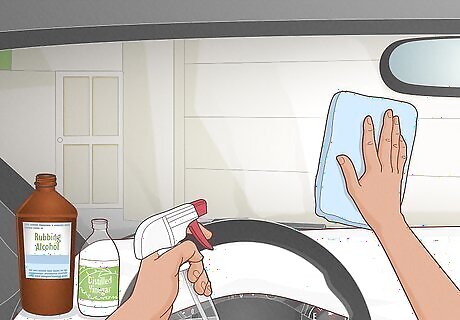
Clean off stubborn film with rubbing alcohol and vinegar solution. Combine 1 c (240 ml) of rubbing alcohol, 1 c (240 ml) of water, and 1 US tbsp (15 ml) of distilled white vinegar in a spray bottle. Spray the homemade cleaner onto a clean microfiber towel and start on one half of the windshield. Wipe the windshield using vertical movements first followed by horizontal strokes from the top to the bottom. Then, do the same thing for the other half of your windshield. Turn the towel over when it starts to look dirty so you don’t spread the dust and film back onto the surface.
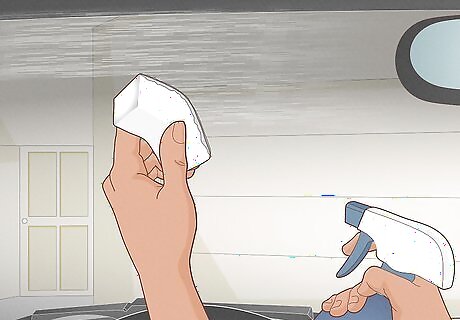
Scrub haze with a Magic Eraser and ammonia-free glass cleaner. Ammonia fumes could damage the interior materials of your vehicle so make sure your cleaner doesn’t contain any. Spray the glass cleaner directly onto your Magic Eraser until it’s damp. Start in the top corner of your windshield, and wipe back and forth using horizontal strokes. After you clean half of your windshield, wipe the cleaner off with a clean microfiber towel. Then, use the other side of your Magic Eraser to scrub the second half of your windshield. If you have tinted windows, then make sure that your cleaner is also tint-safe so it doesn’t peel off.
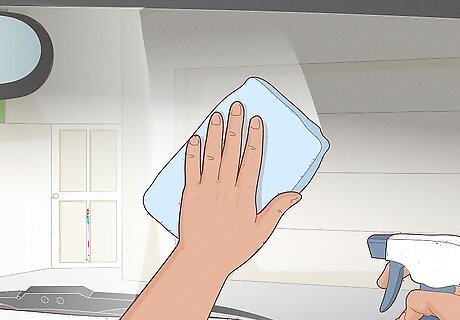
Finish off by wiping your windshield with glass cleaner. Spray a microfiber towel with ammonia-free glass cleaner and wipe your windshield one last time. Work from the top to the bottom to prevent streaks and make your windshield look crystal clear. If you still see streaks or grime after using the glass cleaner, then try using the rubbing alcohol and vinegar solution again.
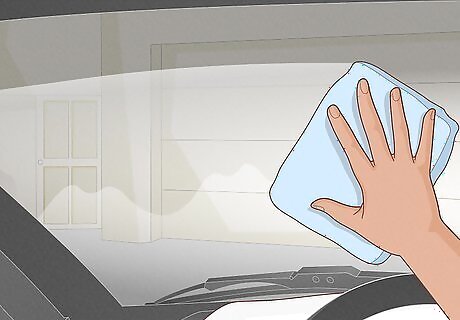
Dry your windshield with a clean microfiber towel. If there’s any leftover cleaner still on your windshield, wipe the glass with another fresh towel to prevent water spots or streaks. Clean off all the leftover moisture on your windshield, and you’re all finished! Avoid leaving any cleaners to dry on your windshield since they could create streaks.
Can you use Windex on your windshield?
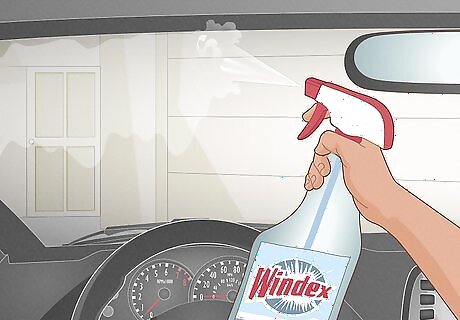
Yes, ammonia-free Windex is a safe cleaner for your windshield. Windex normally contains ammonia, which could create fumes that damage or discolor your vehicle’s upholstery. Ammonia-free Windex doesn’t pose the same risk, so it’s perfectly fine to use it for cleaning the inside of your car’s windshield. Ammonia-free Windex is also safe to use for cleaning tinted windows.
Keeping Your Windshield Clean

Clean your vehicle’s interior before the windshield. Anytime before you clean your car windows, start by vacuuming and wiping down the other surfaces inside your vehicle. If you wait to clean the interior after wiping your windshield, you could spread dust back onto the glass. Aim to do a quick clean inside your vehicle every week or two, and do a deeper clean every 3 months.
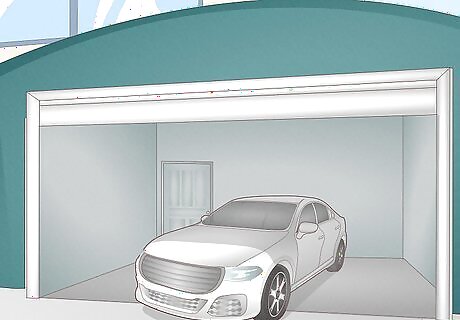
Park your vehicle in a shaded area. Heat from the sun can cause the plastic and vinyl in your dashboard to break down, creating “outgassing” that leaves a hazy film on your vehicle’s windshield. Try to find a shaded area to park your vehicle, such as in a garage or under a tree, to keep the interior cool. Alternatively, put a windshield cover over the inside of your windshield when you park your vehicle outside. That way, the sun doesn’t warm up your vehicle as much.
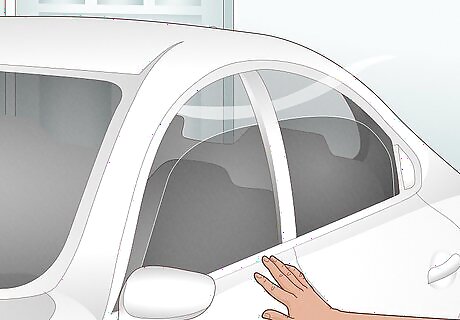
Keep your windows cracked open if you can. When your dashboard is outgassing, the fumes create the film left on your windshield. If you’re parked in a safe area, crack your windows so the fumes can escape rather than build up on the windshield.




















Comments
0 comment